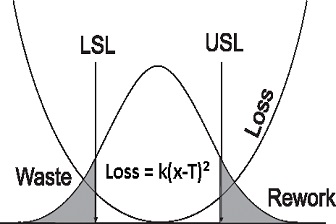Fast Track
If you're flexible with travel, jump ahead by selecting one of the recommended facilities to the right.
Otherwise, the form below helps drill down from state to city to a specific training facility for your Six Sigma White Belt Training class.
Recommended States
Pre-enrollment is accepted until the minimum student requirement is met.
Once enough students have signed up, then we will reach out to process your payment.
If minimum enrollment is not attained, we may ask that you consider an alternate date or location.
With that in mind, would any of the 4 states be possible for you?
Facilities in these states either have a low minimum student requirement, or already have students signing up:
All States
However, if travel is a limitation for you and none of the states above will work, don't worry. We have several options.
And if none of those below suit your needs, feel free to contact us and make a request.
We will do everything possible to accomodate.
A common request we receive is to do on-site training for companies seeking to get several employees trained at the same time.
About Six Sigma White Belt Training
Who is Six Sigma White Belt Training for?
Any professional curious about Six Sigma and determined to improve their organization, salary, and candidacy for promotion should begin with Six Sigma White Belt awareness headed toward Green Belt. All companies whether providing products or services possess opportunity for improvement as do all functions within those companies. Six Sigma is an organizational excellence system applicable to any product, process, or service. This includes production / manufacturing, materials / logistics, purchasing, maintenance, quality, manufacturing engineering, product engineering, sales, marketing, human resources, IT, and finance. Six Sigma exposes upcoming professionals to managerial tasks they may not otherwise have. And, an increasing number of companies require Six Sigma certification for advancement into managerial roles. Students will learn: In our course, students learn:
Six Sigma White Belt Training Course Overview:
Six Sigma White Belt training conveys awareness of concepts and terminology pre-requisite to Green Belt training. Concepts include Six Sigma's traditional DMAIC cycle.
What are White Belt Concepts?
Our training covers roles of participants, belt levels and their meanings, and all important Six Sigma concepts. Roles described include Champions, process owners, project leaders, and team members. Belt levels explained are Master Black Belt, Black Belt, Green Belt, and White Belt. Concepts include:
 | | Define. Managerial: project management, cost-benefit analysis, team member selection, team formation, change management, project charters, policy generation usually for creating or updating containment-related work instructions, and training. Technical: trend charts, Pareto charts, Y to X Mapping and other scoping techniques, inspection / testing. Key deliverables include quantifying the problem's annual financial impact, and diminishing the customer's suffering immediately.
|
 | | Measure. Students are exposed to the notion of Measurement System Analysis (MSA) including its interpretation in the form of a scatter plot and Gage R&R.
|
 | | Analyze. Concepts reviewed include: 5 Why's, cause and effect (fishbone or Iskikawa) diagram, fault tree analysis, Failure Mode and Effects Analysis (FMEA), regression, walking the process, component swapping and Design of Experiments (DOE).
|
 | | Improve. Students will be exposed to Error-Proofing, Payoff Matrix, Criteria Matrix, and Pilot.
|
 | | Control. Final topics are Statistical Process Control (SPC). including different types of control charts, change control, policy writing, training, mentorship, auditing, and supervision.
|











